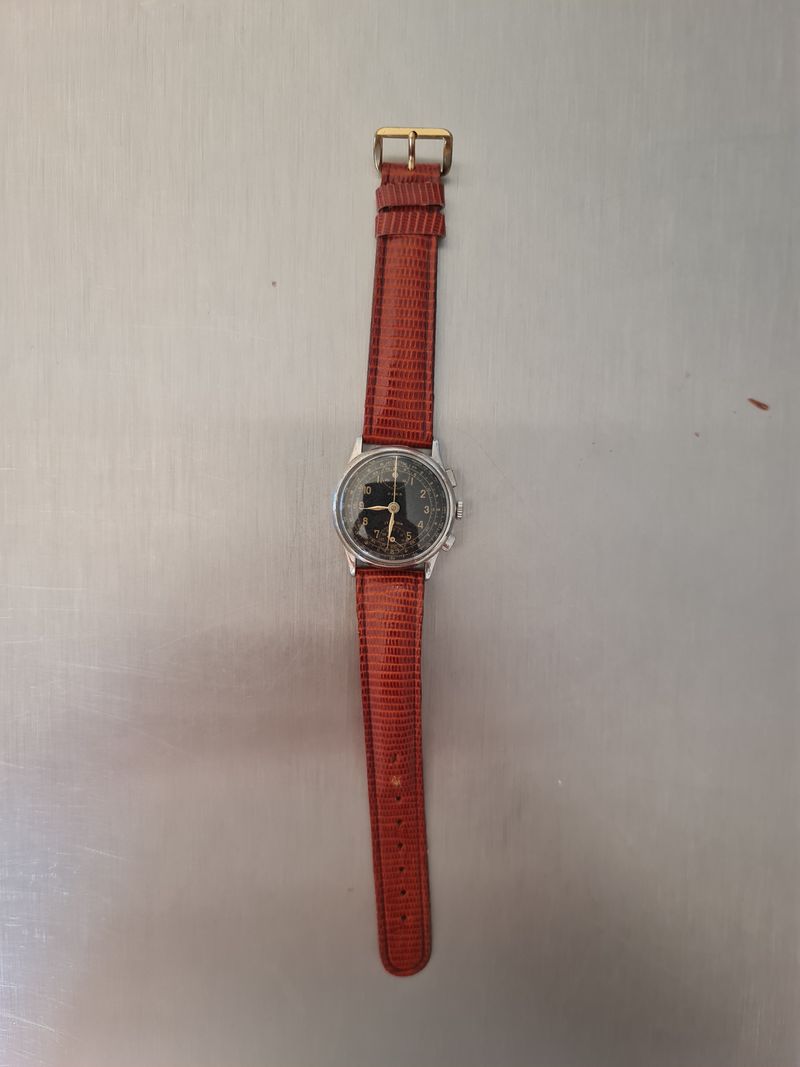Color
N/A
Condition
Good
Material
stainless steel
Place of production
Suisse
Payment methods (2)
Shipping Methods (2)
Description
Cal 170 Venus with a nice black dial Interest in a collection is this caliber is the ancestor of column Wheel Chronographs. Venus Cal. 170 is a hand-winding column wheel chronograph movement with distinctive 6-12 subdial arrangement. The 12:00 register includes a 30 or 45 minute chronograph counter. It is the only Vénus movement with eight columns rather than seven, and the only column wheel Vénus movement to use an oscillating pinion rather than a traditional horizontal clutch. Cal. 170 is first documented in 1936 and was in production by the following year. It remained in production until 1951, by which time it was replaced by the Cal. 188 Venus. Cal. 170 was a revolutionary movement, given its small diameter and modern dual-pusher design, and set the stage for the Cal. 150 and Cal. 175 families, though it was completely different in design. It was much less expensive than competing movements from Valjoux, and was nearly as cheap as Landeron’s Cal. 47, the first full-feature cam-switching chronograph. All of these aspects made it quite successful throughout the 1940s, though the unusual 6-12 layout was not as popular in later decades.
Description
Cal 170 Venus with a nice black dial
Interest in a collection is this caliber is the ancestor of column Wheel Chronographs.
Venus Cal. 170 is a hand-winding column wheel chronograph movement with distinctive 6-12 subdial arrangement. The 12:00 register includes a 30 or 45 minute chronograph counter. It is the only Vénus movement with eight columns rather than seven, and the only column wheel Vénus movement to use an oscillating pinion rather than a traditional horizontal clutch.
Cal. 170 is first documented in 1936 and was in production by the following year. It remained in production until 1951, by which time it was replaced by the Cal. 188 Venus.
Cal. 170 was a revolutionary movement, given its small diameter and modern dual-pusher design, and set the stage for the Cal. 150 and Cal. 175 families, though it was completely different in design. It was much less expensive than competing movements from Valjoux, and was nearly as cheap as Landeron’s Cal. 47, the first full-feature cam-switching chronograph.
All of these aspects made it quite successful throughout the 1940s, though the unusual 6-12 layout was not as popular in later decades.
Cookie notice
This website uses cookies. Please accept them for an optimal browsing experience. More information in our Terms & Conditions.


